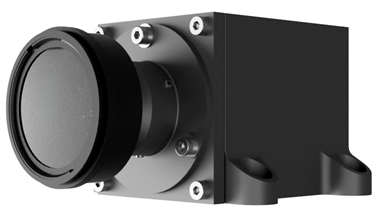
-
StatusCompleted
-
Status date2021-04-15
-
Activity Code4A.065
The main objective of this project concerns the realisation up to Engineering Model (EM) of a new generation of miniaturised camera (MCAMv3) based on the concept owned by Micro-Camera and Space Exploration SA (MCSE) and already validated and proven in several space applications with previous MCAM generations
The first main activity in this project was to define a complete specifications set for the MCAMv3 based on the results of an inquiry sent to the main actors in European space domain in order to develop a MCAMv3 unit which can cope as much as possible to the needs of the market.
The second activity was to thoroughly review the MCAM supply chain in order to mitigate the obsolesce risk at components level, to remove the single source risk at manufacturing level and to finally bring an industrial approach in the process of MCAMv3 realisation.
The last objective was the realisation and the functional test of the MCAMv3 EM through an intermediate step consisting in the realisation and test of a MCAMv3 Elegant BreadBoard (EBB).
In order to be a generic and at the same time space qualified miniaturised camera, the concept and design has to be well planned. The potential objectives need to be defined general enough, yet not so wide that a specific product cannot be designed. Wherever possible a recurrent solution shall be chosen. Simultaneously some elements need to have a customisation character (e.g., optics, sensor) in order to be able to adapt to specific needs. Henceforth the processes involved shall be designed to be largely independent of the chosen detector. Likewise the optical interface shall be generalised, while still allowing a customised FOV and DOF.
MCAMV3 is a non ITAR product which presents miniaturisation, reliability, efficiency and high modularity features allowing it to be easily configured for a large panel of space applications to provide in-situ images usually not available. It is a non-intrusive system with negligible impact in terms of mass and volume that can be proposed as a cost effective solution. The use of standard I/Fs (electrical, commanding, data handling, mechanical) facilitates the integration process and leads to cost reduction. The re-configurability feature enables to use the same MCAMV3 hardware for different space applications, implying important costs reduction during the manufacturing or integration processes.
The innovative MCAMV3 is a key enabling technology for the generalisation of S/C monitoring and diagnostic activities. For example, large antennae or solar panels deployments monitoring gives a better understanding of these complex processes in real conditions. This decreases both risks and costs and simultaneously increases the European telecom platform attractiveness. The possible applications are in the satellite market where large and complex deployments are performed (e.g., Sentinel, BepiColombo, BIOMASS, etc.).
The MCAMV3 is a self-standing miniaturised camera system. Fitted with different kinds of optics, it can be easily integrated to any equipment with only four screws. The image sensor is a CMOS (APS) with low power consumption, and the overall control electronics is miniaturized. This sensor type allows a highly customised read out. The communication is realised with an LVDS and SpaceWire protocol for a data rate up to 100Mbits/s. The power supply is composed by only one +5V regulated DC for an average power consumption <2W.
The imaging sensor is a 4Mpx APS.
The data control is implemented in an FPGA. The system includes memory to allow sufficient storage capability for large images.
Data communication is based on the SpaceWire protocol with a speed up to 100Mbits/s.
The specific mechanical I/F is used to sustain the dedicated MCAMV3 optics with an accurate positioning above the APS sensor and to fix the MCAMV3 I/O connectors.
Baseline Design Review (BDR)
Review of MCAMV3 specifications
Review of development, PA, and tests plan
Review of proposed design and sensor package
Review of preliminary MCAMV3 EBB design
Authorisation for EBB development and manufacturing
Mid Term Review (MTR)
Review of MCAMV3 b/w EBB design and functional tests results
Review of MCAMV3 EM design including miniaturisation process
Review of updated tests plan for MCAMV3 b/w EM
Authorisation for EM design finalisation and manufacturing
Final Review (FR)
Review of MCAMV3 b/w EM design and functional tests results
Closure of project
The project has successfully completed the Final Review.



